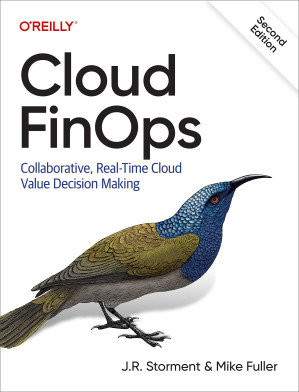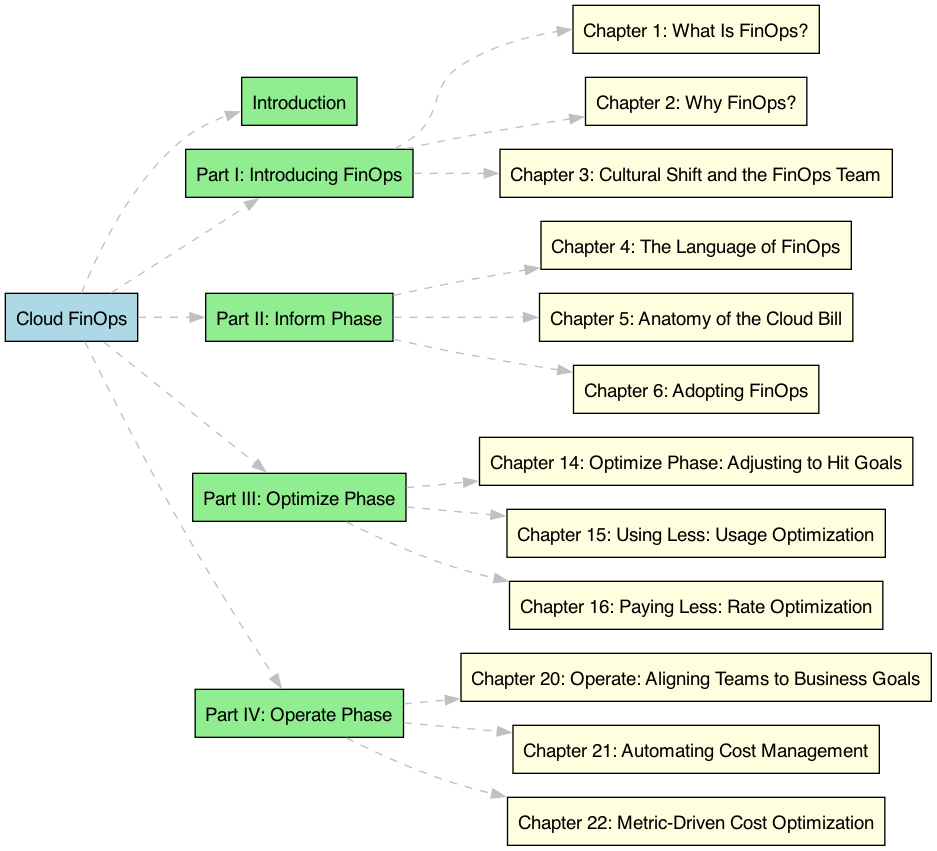Insights from Cloud FinOps: Collaborative, Real-Time Cloud Value Decision Making
In the modern era of cloud computing, managing cloud spend efficiently has become crucial for businesses. "Cloud FinOps: Collaborative, Real-Time Cloud Value Decision Making" by J.R. Storment and Mike Fuller delves into the practices and principles of FinOps, a methodology that combines financial management with DevOps to drive accountability and efficiency in cloud spending. This book is an essential read for engineering and finance teams, executives, and FinOps practitioners aiming to optimise their cloud investments.

Summary

Part I: Introducing FinOps
Chapter 1: What Is FinOps?
This chapter lays the groundwork by defining FinOps as a discipline that brings financial accountability to the variable spend model of cloud. It emphasises the cultural shift required to move financial decision-making to the edges of the organisation, involving engineering, finance, and business teams.
Chapter 2: Why FinOps?
Here, the authors discuss the accelerating cloud spend and the risks of not adopting FinOps. They highlight the importance of FinOps in ensuring that cloud investments are aligned with business goals and provide real-time insights into spending patterns.
Chapter 3: Cultural Shift and the FinOps Team
Building a successful FinOps practice requires a cultural shift within the organisation. This chapter explores the roles and responsibilities of various teams, from executives to engineers, in adopting FinOps practices.
Part II: Inform Phase
Chapter 4: The Language of FinOps
The authors introduce a common lexicon for FinOps, bridging the gap between finance and engineering teams. This chapter covers essential terms and concepts that form the basis of effective communication and collaboration in FinOps.
Chapter 5: Anatomy of the Cloud Bill
Understanding cloud billing is crucial for FinOps. This chapter provides a detailed breakdown of cloud bills, the complexity of billing data, and strategies for managing and optimising cloud costs.
Chapter 6: Adopting FinOps
This chapter offers a roadmap for implementing FinOps in an organisation. It includes strategies for pitching FinOps to executives, building a FinOps team, and creating a culture of accountability and efficiency.
Part III: Optimize Phase
Chapter 14: Optimize Phase: Adjusting to Hit Goals
The authors discuss the importance of setting and achieving goals in the optimisation phase of FinOps. They provide insights into using objectives and key results (OKRs) to drive cost efficiency and business value.
Chapter 15: Using Less: Usage Optimization
Reducing cloud usage is a key aspect of FinOps. This chapter covers strategies for identifying and eliminating waste, rightsizing resources, and implementing cost-saving measures without compromising performance.
Chapter 16: Paying Less: Rate Optimization
Optimising rates is another critical component of FinOps. The authors discuss various pricing models, commitment-based discounts, and negotiation strategies to reduce cloud costs effectively.
Part IV: Operate Phase
Chapter 20: Operate: Aligning Teams to Business Goals
In this chapter, the authors explain how to align FinOps practices with business goals. They cover topics such as staffing FinOps teams, defining responsibilities, and creating processes that drive continuous improvement.
Chapter 21: Automating Cost Management
Automation plays a vital role in managing cloud costs. This chapter explores tools and techniques for automating cost management tasks, enabling real-time monitoring, and ensuring compliance with FinOps practices.
Chapter 22: Metric-Driven Cost Optimization
The authors emphasise the importance of data-driven decision-making in FinOps. This chapter discusses how to use metrics to drive cost optimisation, set achievable targets, and monitor performance.
Key Takeaways
- Collaborative Culture: FinOps requires a cultural shift that promotes collaboration between finance, engineering, and business teams.
- Real-Time Insights: Providing real-time visibility into cloud spend enables better decision-making and drives accountability.
- Optimisation Strategies: Effective FinOps practices involve continuous optimisation of cloud usage and rates to maximise business value.
Conclusion
"Cloud FinOps: Collaborative, Real-Time Cloud Value Decision Making" by J.R. Storment and Mike Fuller is a comprehensive guide to managing cloud costs effectively. By adopting FinOps practices, organisations can achieve greater financial accountability, drive cost efficiency, and align their cloud investments with business objectives. This book is a must-read for anyone involved in cloud financial management and optimisation.